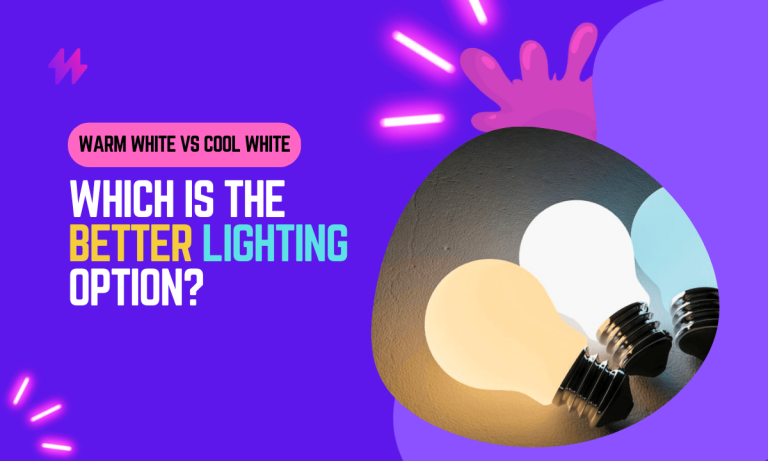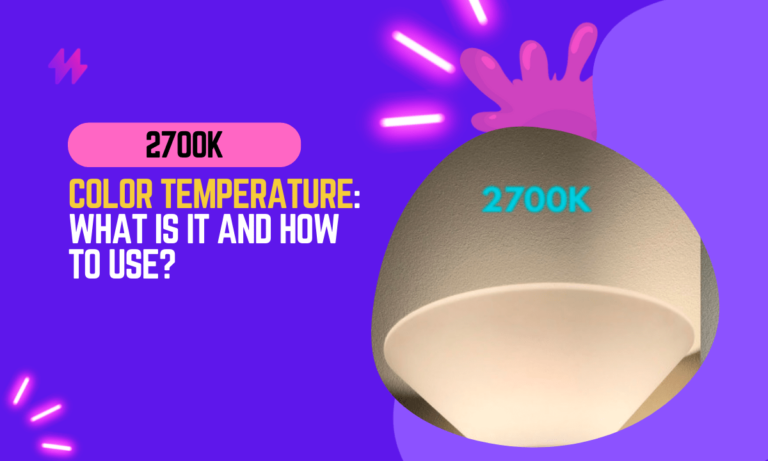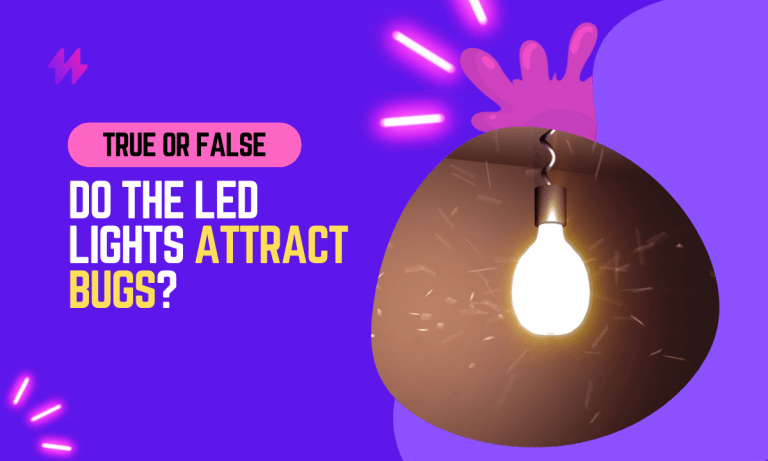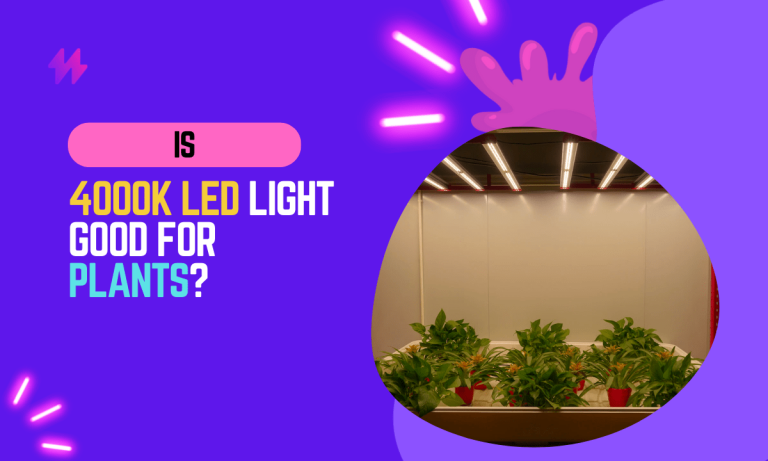Soft White vs Daylight Bulbs – What’re the Big Differences?
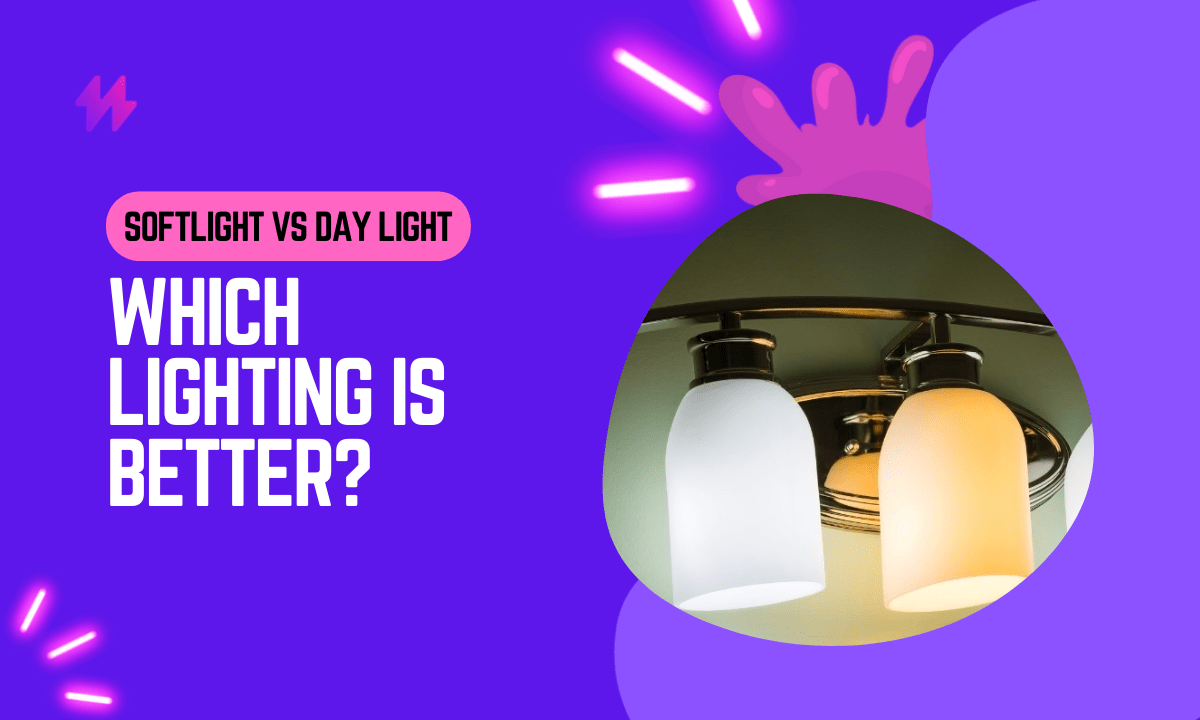
The options can be overwhelming when choosing light bulbs for your home or workspace. One of the most important factors to consider is the bulb’s colour temperature, as it can greatly affect the look and feel of a room. The two most common color temperatures are soft white and Daylight.
In this blog, we’ll explore the key differences between soft white and daylight bulbs and provide tips on choosing the right one for your needs.
Soft White vs Daylight Bulb: Comparison Chart
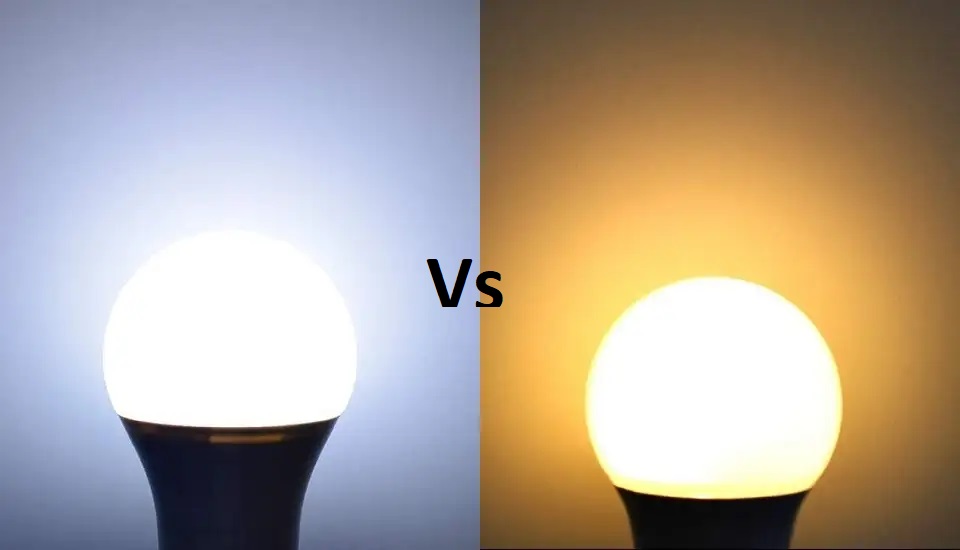
Whether you’re looking to create a cozy atmosphere or increase productivity, understanding the differences between these two types of bulbs can help you make an informed decision.
| Aspect | Soft White Bulbs | Daylight Bulbs |
| Color Temperature | 2700-3000K | 5000-6500K |
| Light Appearance | Warm, yellowish | Cool, bluish-white |
| Best Use | Living spaces, bedrooms, restaurants | Workspaces, kitchens, bathrooms |
| Color Rendering Index (CRI) | 80-85 | 90-100 |
| Energy Efficiency | Less efficient | More efficient |
| Price | Less expensive | More expensive |
What Are Soft White Bulbs?
Soft white bulbs are a type of light bulb that emits a warm, yellowish light similar to traditional incandescent bulbs. They typically have a color temperature between 2700K-3000K on the kelvin scale and a Color Rendering Index (CRI) of around 80, which means they can accurately display colours.
Soft white bulbs are often used in living spaces and bedrooms to create a cozy and inviting atmosphere. They are available in various bulb types, including incandescent bulbs, compact fluorescent (CFL), and LED, and can be found in various wattages to suit different needs.
Pros and Cons of Soft White Light Bulbs
Pros of using Soft white light:
- Emit a warm, cozy light similar to traditional incandescent bulbs
- Create a relaxing and inviting atmosphere in living spaces and bedrooms
- Enhance the natural colours of your decor
- Often less expensive than daylight bulbs
- Available in a wide range of bulb types and wattages
Cons of using soft white light:
- It may not provide bright, accurate lighting for tasks that require precision, such as reading or applying makeup.
- Consume more power, leading to higher energy costs
- It may not have as high of a Color Rendering Index (CRI) as daylight bulbs, which can impact how accurately colors are displayed.
- It may not be suitable for workspaces or areas that require cool, bright light.
Where to Use and Why to Choose Soft White Light Bulbs
Soft white bulbs are ideal for areas where relaxation and comfort are a priority. Here are some places where you might want to use soft white:
Living rooms: Soft light can help create a cozy and inviting atmosphere in living rooms, making them a great choice for entertaining guests or spending time with family.
Bedrooms: Soft white light can help create a relaxing and restful environment in bedrooms, making them a great choice for reading, watching TV, or getting ready for bed.
Dining rooms: Soft light can create a warm and inviting atmosphere, making them a great choice for entertaining guests or enjoying family meals.
Hallways and entryways: Soft white can help create a welcoming and comfortable atmosphere in hallways and entryways, making them a great choice for greeting guests and creating a smooth transition from room to room.
Also read: Bright White vs Daylight Lighting – What’s the Difference?
What Is A Daylight Bulb?
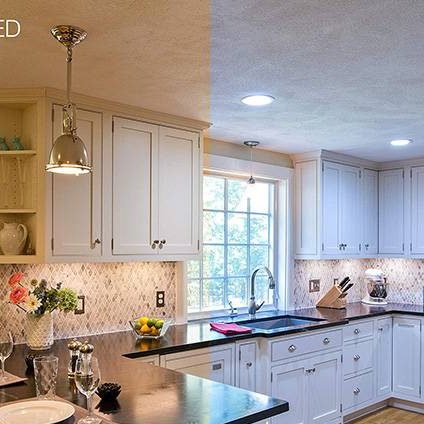
The daylight bulb mimics daylight color throughout the day. These bulbs are suitable for rooms that have no light supply. Basements, attics, or games rooms are example areas with daylight bulbs. It’s bright, and it could be more brightly. If you only want light for a specific purpose, daylight bulbs are the right choice. Natural light provides the lightest and does not cause any discomfort to its surroundings. The light will be lighter and cooler. It is possible to categorize a light bulb in several ways, which will be covered shortly. When you see Daylight, you remember the sunlight.
Pros and Cons of Daylight Bulb
Pros of using Daylight:
- Produce a cool, bright light similar to natural sunlight.
- Enhance color accuracy and make colors appear more vibrant
- Ideal for workspaces and areas that require bright, accurate lighting, such as kitchens and bathrooms
- They may help improve mood and increase energy levels due to their bright, stimulating light
- Often available in energy-efficient options, leading to lower energy costs in the long run
Cons of using Daylight:
- It may not provide a warm, cozy atmosphere like soft white bulbs
- It may not be suitable for areas where relaxation and comfort are a priority, such as bedrooms and living spaces
- It may be more expensive than soft white bulbs
- It may not be available in as many bulb types and wattages
Where to Use and Why to Choose Daylight Light Bulbs
Daylight light bulbs are designed to mimic bright white similar to natural light, making them a great choice for areas where bright, proper lighting is needed. Here are some places where you might want to use daylight bulbs:
Kitchens: Daylight bulbs can help improve color accuracy and make food preparation easier by providing bright, cool lighting.
Bathrooms: Daylight bulbs can help provide proper lighting for tasks such as shaving or applying makeup, making the space feel brighter and more energizing.
Workspaces: Daylight bulbs are ideal for tasks requiring precision and accuracy, such as offices or crafting spaces.
Garages and workshops: Daylight bulbs can provide bright, cool lighting that makes it easier to see small details and work on projects.
Soft White vs Daylight for Bathrooms
When choosing between soft white vs daylight bulbs for your bathroom, there are a few factors to consider. Here’s a closer look at the differences between the two:
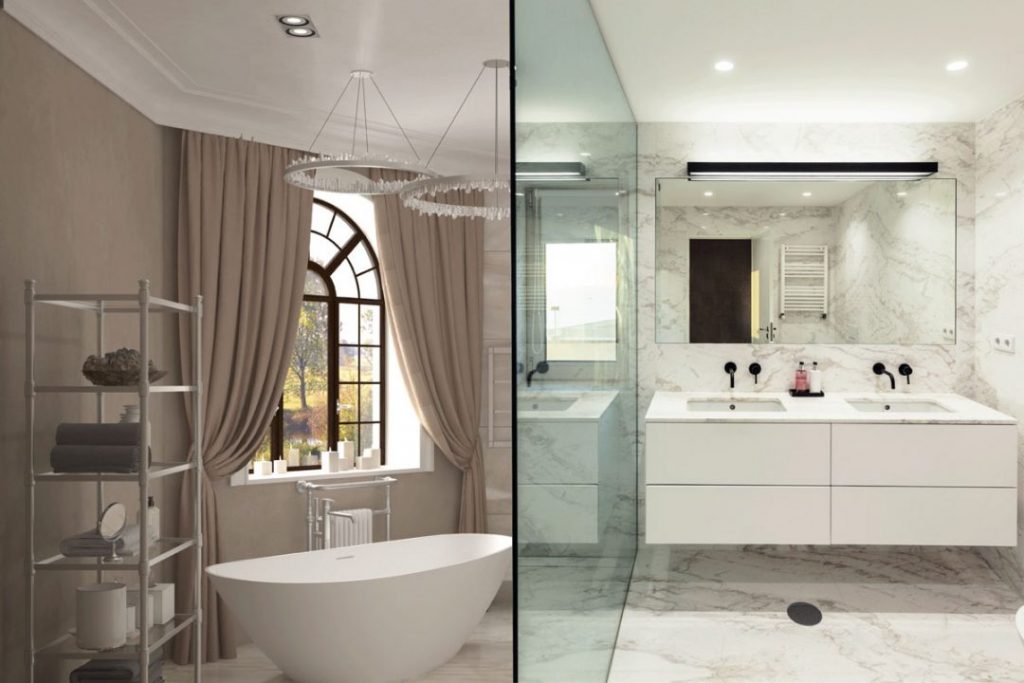
Color Temperature: Soft white bulbs have a warm, yellow color range, while daylight bulbs have a cooler, bluish-white tone. The color temperature you choose will depend on your preference and the look you’re going for in your bathroom. The soft white bulb can create a cozy, relaxing atmosphere, while daylight bulbs can make the space brighter and more energizing.
Lighting Needs: The lighting you need in your bathroom will also affect which bulbs you choose. Soft light is ideal for areas where you want more muted, ambient glow, such as in a bedroom or living room. On the other hand, daylight bulbs are better suited for areas where you need brighter, more accurate lighting, such as in a workspace or bathroom where you might apply makeup or shave.
Size of the Bathroom: The size of your bathroom will also impact which type of bulb you choose. If your bathroom is small or lacks natural light, use daylight bulbs to help brighten the space. If your bathroom is larger or has ample natural light, soft white light may be a better choice to create a cozy, relaxing ambiance.
Energy Efficiency: LED bulbs are popular for soft white and daylight lighting due to their energy efficiency and long lifespan. While they may be more expensive upfront, they will save you money on your energy bills in the long run.
Must read: How to Choose Bathroom Color Temperature
Soft White vs Daylight for Bedroom
When choosing between soft white and Daylight for your bedroom, there are a few factors to consider. Here’s a closer look at the differences between the two:
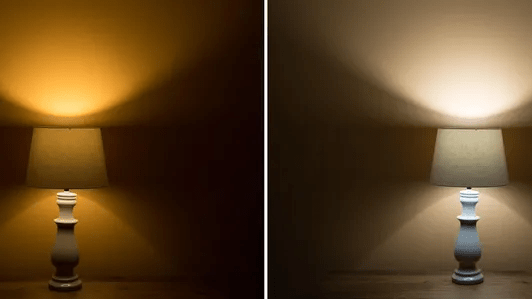
Color Temperature: Soft white lighting comes under the yellow color range and is usually more warm tones, while daylight lighting has a cooler, bluish-white tone. The color temperature you choose will depend on the mood you’re trying to create in your bedroom. Soft white lights can create a cozy and relaxing atmosphere, while Daylight can make the space feel brighter and more energizing.
Lighting Needs: The lighting you need in your bedroom will also affect which bulbs you choose. Soft white lights are ideal for areas where you want more subdued, ambient lighting, such as when winding down before sleep. On the other hand, Daylight is better suited for areas where you need brighter, more accurate lighting, such as when reading or doing work in bed.
Personal Preference: Choosing soft white lighting and Daylight LED lighting for your bedroom will depend on your preferences. Some people may prefer soft white’s cozy and warm color temperature glow for a relaxing and calming atmosphere, while others may prefer the bright white bulbs and energizing feel of Daylight to start their day.
Light Fixture Compatibility: Before making your choice, check the compatibility of your light fixtures with the bulbs you want to use. Some fixtures may only be compatible with certain types of bulbs, so it’s important to double-check before making a purchase.
Energy Efficiency: LED bulbs are popular for soft white and daylight lighting due to their energy efficiency and long lifespan. While they may be more expensive upfront, they will save you money on your energy bills in the long run.
Also read Cool White vs Neutral White: Choosing the Right White Light Color.
Soft White Lights
There are many good soft white light bulbs on the market, but two popular options are:
Philips Hue White A19 Smart LED Bulb: This bulb is a popular choice among smart home enthusiasts, as it can be controlled with a smartphone app and is compatible with voice assistants like Amazon Alexa and Google Assistant. It emits a warm white light and can be dimmed to create the perfect ambiance.
Cree 60W Equivalent Soft White A19 Dimmable LED Light Bulb: This bulb is a great option for a more affordable yet high-quality soft white bulb. It has a long lifespan and can be used in various fixtures, making it a versatile choice for any room in your home.
Daylight Lights
When it comes to daylight bulbs, there are many options. Two of the most popular choices are:
Philips LED 60W A19 Daylight Non-Dimmable Bulb: This light bulb emits a bright, white light that mimics natural Daylight. It is energy efficient, with a long lifespan, and is a great choice for those looking to save on energy costs.
GE Refresh 60-Watt EQ A19 Daylight Dimmable LED Light Bulb: These LED bulbs are also a great choice for those seeking a high-quality daylight bulb. It is dimmable, allowing you to adjust the brightness to your preference, and boasts a lifespan of up to 13.7 years. Additionally, it is energy efficient, making it a cost-effective choice in the long run.
Smart Light Bulb (LEDs)
Philips Hue White and Color Ambiance A19 LED Smart Bulb: These smart led light bulbs are compatible with various voice assistants and can be controlled via a smartphone app. It can be customized to emit both lights and millions of other colors.
LIFX A60 Wi-Fi Smart LED Light Bulb: These light bulbs can also be controlled with a smartphone app and voice assistants like Amazon Alexa and Google Assistant. It offers a range of color temperatures, including light color temperatures, and is also dimmable.
Sylvania Smart+ LED Bluetooth Bulb: These light bulbs can be controlled with a smartphone app and Bluetooth connection, making them a great option for those who don’t want to invest in a full smart home system. It can emit light for both the color temperature and is also dimmable.
Frequently Asked Questions: Soft White vs Daylight
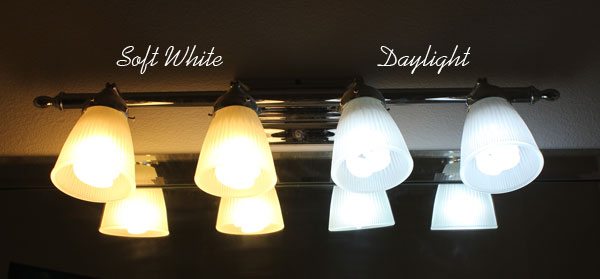
What color light bulbs are for the living room?
Soft white light bulbs, with a color temperature range between 2700K and 3000K, are a great choice for living rooms. They emit a warm and cozy light that creates a relaxing atmosphere, perfect for unwinding after a long day or spending time with friends and family.
Is soft white light warmer than Daylight?
Yes, soft white light bulbs are warmer than Daylight. It has a color temperature range between 2700K and 3000K, while daylight bulbs have a color temperature range between 5000K and 6500K. The lower the temperature on the Kelvin scale, the warmer and more yellow the light appears.
Should I get Daylight or a soft white bulb?
Daylight lights help improve productivity and are great for cooking and office usage. Soft white light bulbs have a better feel, making them perfect for bedrooms. Then many other things can determine how to choose a lamp.
Is a soft white bulb or a daylight incandescent bulb better for the eyes?
Soft white light bulbs are generally better for the eyes as they are warmer and more comfortable than cooler, brighter daylight lighting, better suited for workspaces and more complex projects.
If you don’t like reading, here’s a quick video on soft white vs daylight bulbs.
Final Words
In conclusion, the choice between soft white and daylight bulbs is more than just a matter of light color preference; it deeply influences the atmosphere and functionality of any space. Soft white bulbs, which emit a warm, creamy light typically around 2700K, create a cozy and inviting environment. This makes them ideal for areas in the home where people relax, such as living rooms and bedrooms, where the softer light facilitates a calm and peaceful setting conducive to unwinding and resting. Additionally, the warm glow of soft white bulbs is often preferred in settings that feature rich, earthy, or traditional decor, as it enhances the depth of color and adds to the ambiance of comfort and warmth.
On the other hand, daylight bulbs, which produce a much cooler light around 5000K to 6500K, mimic the tone of natural daylight and are excellent for tasks requiring great precision and high visibility. These bulbs are particularly effective in places like offices, kitchens, and workspaces where clarity and alertness are key. The cooler, bluish light is believed to help maintain focus and concentration, thereby enhancing productivity. Moreover, in spaces that are designed with modern, contemporary, or minimalist aesthetics, the crispness of daylight bulbs can complement the decor, making colors appear vibrant and spaces feel more expansive. Ultimately, the decision between soft white and daylight bulbs should be guided by the intended use of the room, the natural amount of light it receives, and the desired emotional and psychological effects you wish to evoke within the space.

